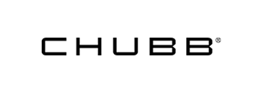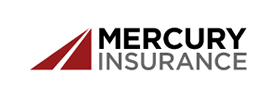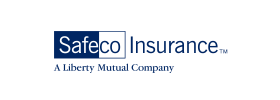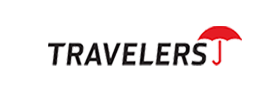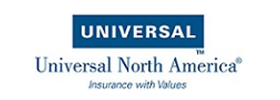Is your Auto Insurance bundled with your Coppell Homeowners Insurance, giving you a discount? If not, call The Select Insurance Agency today for a quick quote. We’ll make sure you’re receiving all the discounts you deserve!
Is your Auto Insurance bundled with your Coppell Homeowners Insurance, giving you a discount? If not, call The Select Insurance Agency today for a quick quote. We’ll make sure you’re receiving all the discounts you deserve!
Ready to take your RV out for an adventure? Make sure you are prepared for the unexpected by bringing with you these essential tools and supplies.
Over the last two years, auto insurance costs have risen on average about 10 percent, according to the Insurance Information Institute (I.I.I.). Why?
Your insurance premium is based on a variety of factors, including your driving record; how much you use your car; where it is parked and where you live; the type of car you drive; your age and gender; your credit score; and the type and amount of coverage. Understanding these factors can help you get a better deal on your policy.
The I.I.I. offers these tips for finding the best auto insurance policy for your needs and budget:
Prices and coverage levels vary from company to company, so it pays to shop around. But don’t shop price alone; look for a financially sound insurance company with a reputation for good customer service.
The price of the vehicle, the cost to repair it, its overall safety record and the likelihood of theft can all affect the price of your coverage, so check with your insurance professional before deciding which car to buy.
When you file a claim, the deductible is the amount you pay before your insurance kicks in. With a higher deductible, you can lower your premium significantly–but be sure you have enough money set aside to pay it if you have a claim.
If the market value of your car is less than 10 times the auto insurance premium you are paying, purchasing comprehensive and/or collision coverage may not be cost-effective.
Many insurers use credit information to price auto insurance policies, so a solid credit history can lower your premium.
Insurance companies offer a wide variety of discounts—here are some you can ask about:
When it comes to any type of vehicle, even watercraft, it is necessary to have some form of insurance coverage in place for a few different reasons. The first and most obvious reason is that in the event of an accident or damage to your boat you do not want to be responsible for paying all the repair costs and getting your boat seaworthy again.
Unlike car insurance that you might get from an auto insurance company, boat insurance mainly covers the cost of repair of the boat in the event of any damage. It does not necessarily cover the medical bills of you or anyone else that is injured in an accident. If you are located in Coppell, TX the helpful agents at The Select Insurance Agency can help you determine what level of coverage you need to keep your boat safe.
In most cases, boat insurance is simply in place to help you protect your investment. Just like cars that have a loan out on them are required to have full coverage, your lender is likely to require full coverage of your watercraft if you still have a loan out on it for a few reasons. First and foremost they want to be able to recover their investment in the case of an accident or in the case of damage to the boat.
Your insurance coverage will help cover repair costs and will help make sure you have the ability to repair and get your boat back on the water in the event of damage. Some policies may also cover damage caused by other people like intentional damage or defacement and destruction by others. You can always ask your agent what your policy covers and what is right for you.
We’ve had a lot of wind lately, here in Coppell, and all over the Dallas-Ft. Worth metroplex. These winds have caused many tree branches to fall. Help prevent a branch from falling on your roof or car by checking the trees in your yard and neighboring yards. If you have branches hanging over your roof, car, fence or other property, trim them back or have a service come out to trim all overhanging branches. This will save you the frustration of damage to your property.
Take every precaution to avoid being bitten by mosquitoes if at all possible.
Remember the 4 D’s: Defend, Dress, Dusk & Dawn, and Drain.
Texas climate is always unpredictable and temperatures vary throughout the seasons. As a result, mosquito season in Coppell, Texas is year-round. The Environmental Health Department’s goal is to begin reducing mosquito populations as early in the season as possible. By eliminating containers, cleaning rain gutters, and maintaining swimming and ornamental pools you can stop the mosquito life cycle in its tracks.
There’s a lot to love about Coppell, TX, and one of those things is the opportunity to get great RV insurance. Many people who travel fulltime in their RVs call Texas home. Even if you only use your RV on a part-time basis, though, you’ll want to have good insurance on it. Whether it’s on the road or parked in your driveway, it should be covered so you don’t have to worry about financial losses if something should happen to it. You also want to make sure the insurance policy provides for adequate medical treatment if you or someone else is injured in an accident with your RV.
The state has minimum insurance requirements, but those might not be enough for your needs. Instead, you may want to consider a higher level of coverage and other kinds of coverage such as comprehensive and collision. Only you can decide if you want insurance beyond state requirements, and working with a knowledgeable insurance agent can help you make that decision. The more you know about the levels of coverage available to you and the costs for those coverage options, the better decision you can make for your finances and liability protection.
When your Coppell, TX RV insurance comes from The Select Insurance Agency, you know you’re getting insurance you can feel good about. It’s easy to get a quote, and you can find out the prices from several different companies all in one place. Then you can choose not only good insurance, but a fair price for a policy that’s going to be a good choice for you. Anytime you have questions about your policy or you need to make changes, you’ll also have someone you trust to work with, helping you keep the right insurance coverage on your RV no matter where you travel.
Summer time is almost here, and that means it’s time to start preparing the family boat for the season. In addition to preparing the boat and ensuring there are enough snacks for everyone, though, it’s important to take the time to make sure you have a few essentials to keep everyone safe.
If you’re thinking about buying a boat insurance policy, then call the insurance agents at The Select Insurance Agency. Residents of Coppell, TX have used this agency for years for their boat insurance needs.
Many people end up purchasing too much or too little life insurance. This is definitely not something that you want to do. Instead of guessing on the amount of life insurance that you need, figure out just how much you need and make sure you get the right amount. Use these questions to get started so you can get the right amount of life insurance for your needs.
If you still are unsure about how much life insurance you need to purchase or would like to move forward with getting a policy, contact us today at The Select Insurance Agency. We can find you the perfect policy for your needs as well as one that fits your budget.
Fender benders are typically thought of as annoying, but ultimately inconsequential accidents. However, although not as serious as other collisions, fender benders can be devastating, particularly if fraud is involved. The following suggestions will help you keep fraudsters at bay:
1. Be careful in parking lots
Parking lots are prime breeding grounds for fraudulent fender bender accidents. Whenever possible, park far away from all other vehicles. And if waved at to back out of a spot, take heed — this is when many fraudsters strike.
2. Don’t give the other party the benefit of the doubt
It’s tempting to think the best of the other person involved in the collision — but that’s exactly what fraudulent drivers want you to do. The last thing you should do if involved in a fender bender is walk away. This is especially true if the other party seems eager for you to avoid further involvement. Your suspicion should also be aroused if the driver and other vehicle occupants claim to have sustained extensive injuries that are not commensurate with the speed you were driving at the time of the accident. Although it is possible to be severely injured in low-speed collisions, your guard should still be up if the ‘victim’s’ injuries may seem excessive.
3. Take pictures
Once you’ve decided to remain on the scene, documentation is essential. Take several pictures of the damage, of the location, of the other driver, and of that person’s driver’s license. The more pictures you take, the easier it will be to protect yourself later on.
Even if you have safe driving habits and engage in other precautionary measures, it is important to seek good coverage. Get in touch with The Select Insurance Agency to find the best possible coverage for your vehicle.



